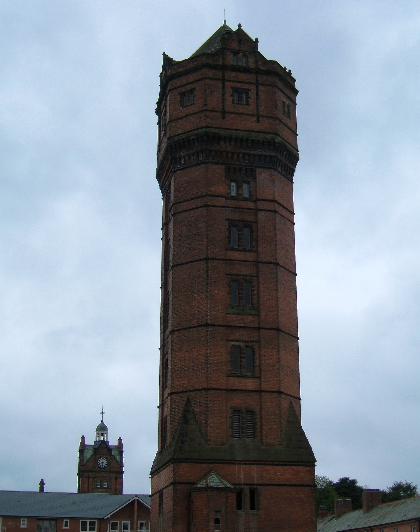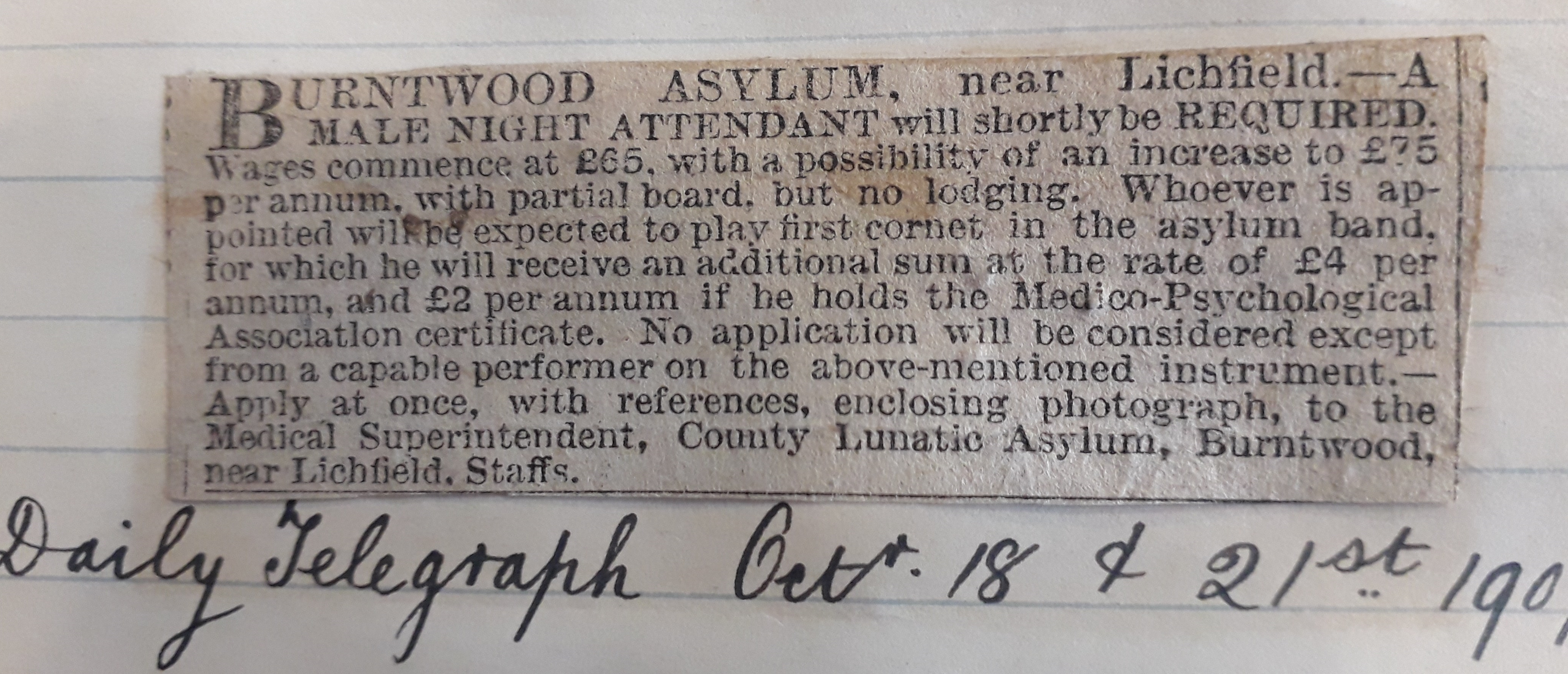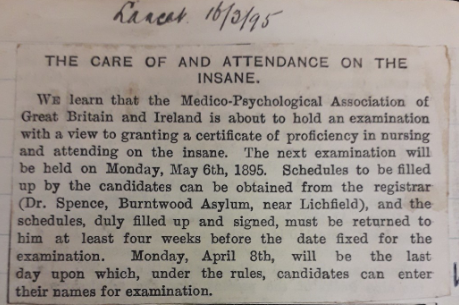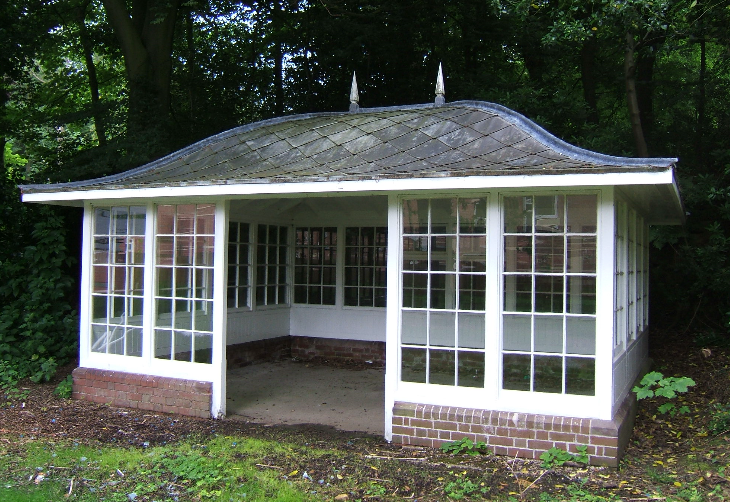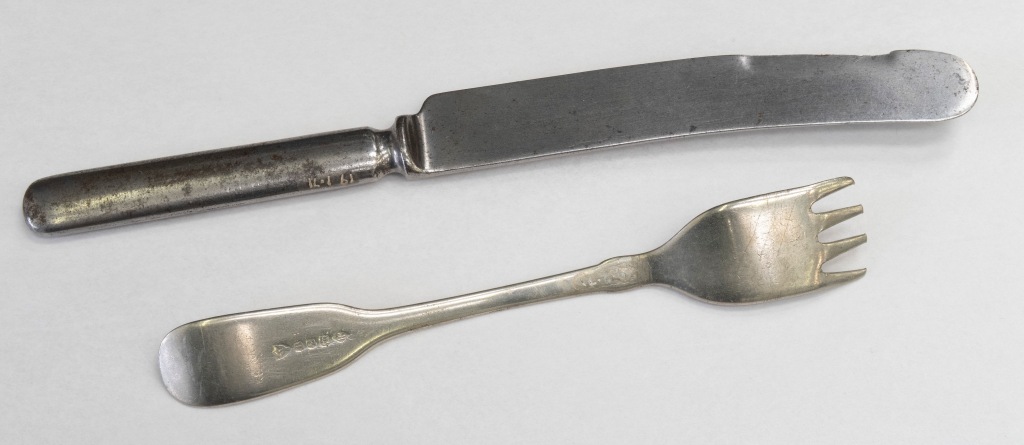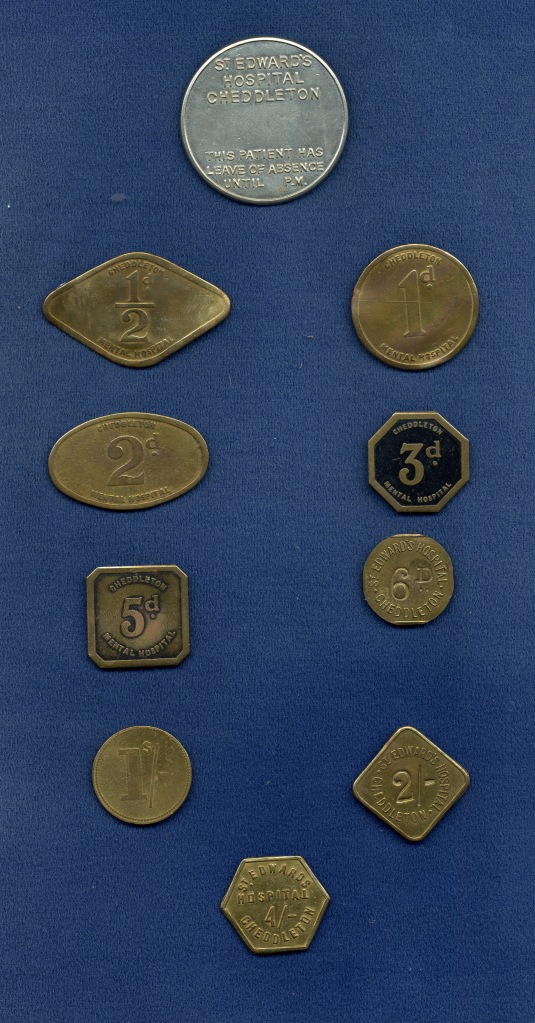As we have seen in previous blog posts, the three Staffordshire County asylums all created Annual Reports. In the twentieth century, these usually consisted of a Report by the Visiting Committee, a Report by the Medical Superintendent and a Report of the Commissioners. They provide a fascinating insight into the life of the hospitals, weaving together as they do descriptions of the events and developments over the previous twelve months, observations by the interested parties as to what had improved and what needed to be improved or bought for the hospital, and also a running commentary on medical research and how the hospitals were responding to changing medical theory and practices.
The reports highlight the issue of how children with learning difficulties were treated in this period. Asylums had long been catch-all institutions and had been receiving points for all types of patients who today would be regarded in very different ways and treated in very different settings. Children with learning difficulties had often ended up in asylums, some placed there when families could no longer cope, or when Poor Law institutions had no accommodation for them. As time went on in the early twentieth century, more specialised treatment of different asylum populations continued to develop, and children are a key example of this trend.

The legal status of children had already begun to change in the early 1900s, and the process of treating them as a separate entity from adults had begun. The Children Act (1908) was a major step towards seeing children as separate from adults, keeping them out of adult prisons, preventing their access to alcohol, and empowering local authorities to allow children poor relief outside of the workhouse.[i]
The 1913 Mental Deficiency Act set up a new ‘Board of Control’. Under this legislation ‘mental defectives’ were to be supervised in the community or placed in new ‘mental deficiency colonies.’ Some local authorities founded new colonies for this purpose, which acted as a halfway house between a small settlement and a hospital. Other areas which either lacked the money for new institutions, or didn’t wish to follow the new pattern, set up separate blocks and wards for children on existing asylum campuses.[ii]
The new legislation brought in a strict ‘grading’ system for people with learning disabilities, which was typical of much of the social science of the times. It placed people in categories, using language which is disturbing to us today.
‘Idiots’ were the ‘bottom grade’ (the profoundly disabled). The ‘middle grade’ were the ‘imbeciles’. The highest functioning disabled people were graded as ‘feeble minded’, with most of this group able to support and look after themselves to some extent. Alongside this group were the ‘moral defectives’ who were labelled as ‘(unable to) distinguish right from wrong and represent a grave danger to the community’.
The treatment of children graded under the new system continued in Staffordshire within the confines of the asylums, and Cheddleton asylum founded blocks for their accommodation and treatment. This was possible because at the end of the First World War, patients who had been transferred to Cheddleton from other asylums, which had served as War Hospitals, returned to their original asylums (mostly Rubery Hill in Birmingham). The departure of the ‘war boarders’ freed up 175 beds, which allowed a block on the female side of the hospital to be set aside for children.
The block initially accommodated 40 boys and 36 girls, described as ‘low grade imbeciles’. The 1922 Commissioners Report stated that the child patients were ‘receiving most excellent treatment under most kindly nurses. In the absence of a certified institution under the Mental Deficiency Act we regard this as a good temporary management’.[iii]
A lack of training or a specialist institution in Staffordshire meant that the county was reliant upon the expertise of other local authorities, and the childrens’ nurses employed at Cheddleton were sent to Meanwood Colony, opened by Leeds in 1919 as a ‘mental deficiency’ colony, for a whole month of training.
By the early 1920s, the children’s service was well established at Cheddleton. Medical Superintendent Menzies wrote in the 1923 annual report:
‘Two years ago I expressed the opinion that little could be done for the low grade child in our idiot wards. It is with pleasure that I am able to confess myself wrong’.
More details from his report, and from subsequent years, follow below.
————————————————-
1923 Cheddleton
Resident MO and Superintendent: WF Menzies MD BSc (Edin) FRCP
Sen Asst MO: W D Wilkins MB ChB(Vict) MRCS LRCP DPM (Camb)
Jun Asst MO: F H Stewart MA BSc (St And) MD (Edin)
The special block (for idiots and low-grade imbeciles) has proved successful and a very elementary scheme of training is carried out, chiefly in the direction of teaching the most backwards to walk, talk, and take notice. 12 words a year is good progress in some cases, and an early necessity is to cultivate the rudimentary power of attention. The sisters in charge of the boys’ and girls’ wards were sent to the Meanwood Colony, maintained by the Leeds Mental Deficiency Committee, for one month’s intensive training, and returned full of enthusiasm for the methods used with the lowest-grade children…..The Newport Guardians are arranging to transfer one intelligent boy to the Derby Royal Institution for the Deaf and Dumb.
Intention – To form a small schoolroom in the idiot’s block
Menzies Report:
‘Two years ago I expressed the opinion that little could be done for the low grade of child in our idiot wards. It is with pleasure that I am able to confess myself wrong. Nothing is more wonderful than the advance made. Two years ago a visitor to the ward met a howling mob, spiteful, mischievous, dirty in their habits. Now they are pleasant, quiet and smiling, very few but are clean in habits, none but the lowest who cannot respond to simple ideas. Nearly all can talk a little, many have learned to walk; they play games without squabbling and biting. This progress should be a source of satisfaction to Sisters Chaplin and Stanley, who returned from their course of intensive training at Meanwood Colony full of enthusiasm and have taken such infinite trouble with and interest in their charges. They have found a market for the small baskets and other articles made by the children, and with the profits have purchased further materials and instruction models, in addition to those provided by the Committee. I am making tentative enquiries as to the possibility of linking up our department with the newly established Leek Orthopaedic Centre, in order to get at the brains of the paralysed; for it is well known that if, by correction of congenital deformities, these children’s feet can be got to the ground, the nerve energy required for walking actually develops some of the latent areas in the brain, thus enlarging their experience of things outside themselves and leading to further intellectual progress…….what a saving of poor rate if they could earn even sufficient to pay for their maintenance, although they could never be expected to compete in the market outside. The public has only just begun to appreciate the economic advantages of orthopaedics in early life among the mentally normal, the possibility of improving the subnormal also is now beginning to be recognised by the medical profession.’
‘Nothing further has been done to make provision for the Mental Defectives in the county…..my advice…..is to acquire half a dozen of the numerous country houses which are at present available, and place in each of them 30 – 40 defectives, not mixing grades or sexes in any one building. No expensive staff would be required, as medical officers from the 3 hospitals would visit regularly; and in only one home for each sex, viz:- for that in which the highest grade resided, would workshops and artisan instructors be required. The Stoke-on-Trent villa is already adapted for high grade girls.’
1924 Cheddleton
Overcrowding by 32 male and 7 female – ‘it is specially unfortunate in regard to our Mental Defective wards. The boys cannot be unduly crowded or discipline suffers; they must have room to run about, be taught exercises and avoid jostling and fighting…..some of the less favourable cases have to be warded with adult men and the old undesirable regime again introduced.’
1925 Cheddleton
Considerable progress made in developing a system of education for the lowest grade of mentally defective children. Miss E Price, Travelling Organiser of the National Association for Mental Welfare spent a month working on a timetable suited to the mentality of the children, and returned for 10 days to note progress. It so happens that the girls in Ward XVI are of higher average grade than the boys in Ward XVII; so the former ward is popular with the nurses and the latter is not. Nurses can rarely see beyond their own nose, and do not recognise that there is more credit in teaching a low grade child cleanliness than in making a fairly intelligent one a scholar, for the former will save future expenses by helping to nurse himself, but as to the latter, the more he learns the nearer he will approach competition with normal workers. As he will never succeed in this contest he will remain expensive to keep.
Wants verandahs, to be able to hold outdoor classes, to benefit the children’s physical health.
‘the absence of sunlight most seriously handicaps progress’ in orthopaedic treatment, ‘many children will not stand the restraint of splinting and have to be prematurely released to save them from going downhill’ – trained masseuse and electrotherapist have started work on muscle re-education, observations on causes of muscle spasticity.
58 boys and 28 girls under treatment, plus 10 adolescent females, ‘infantile in type.’
‘Three boys have been given up as unmanageable and have been relegated to the male side; they were viciously sexual and violently malicious, attacking nurses and patients and destroying property.’
Children’s classroom is ready and all furniture delivered except the small special chairs not made in this country.
This is just a snapshot of the attitudes and approaches to child learning difficulties of the early interwar period. We can see in Menzies’ comments a mixture of very advanced medical thinking in providing therapy for the children, but also more regressive attitudes. His comments show that he believed that the aim of reducing expenditure should be a factor in offering therapy to a particular child, and that children with learning difficulties could never rival the abilities of ‘normal workers’ – teaching them too much was a waste of time as they would not gain independence and remain expensive to keep. In the next two posts, we will explore further the history of how childhood learning difficulties, psychiatric problems and psychological issues were imagined, explained and treated between the early 1800s and the twentieth century.
[i] Steven J. Taylor, p.750
[ii] For more on these developments see https://historicengland.org.uk/research/inclusive-heritage/disability-history/1914-1945/mental-deficiency-between-the-wars/
[iii] For more on this Myers, pp.129-130
Further Reading:
Historic England, https://historicengland.org.uk/research/inclusive-heritage/disability-history/1914-1945/mental-deficiency-between-the-wars/
Edward D. Myers, A History of Psychiatry in North Staffordshire (Churnet Valley Books, Leek, 1997)
Steven J. Taylor, ‘She was frightened while pregnant by a monkey at the zoo’: Constructing the Mentally-imperfect Child in Nineteenth-century England’, Social History of Medicine Vol. 30, No. 4 pp. 748–766


